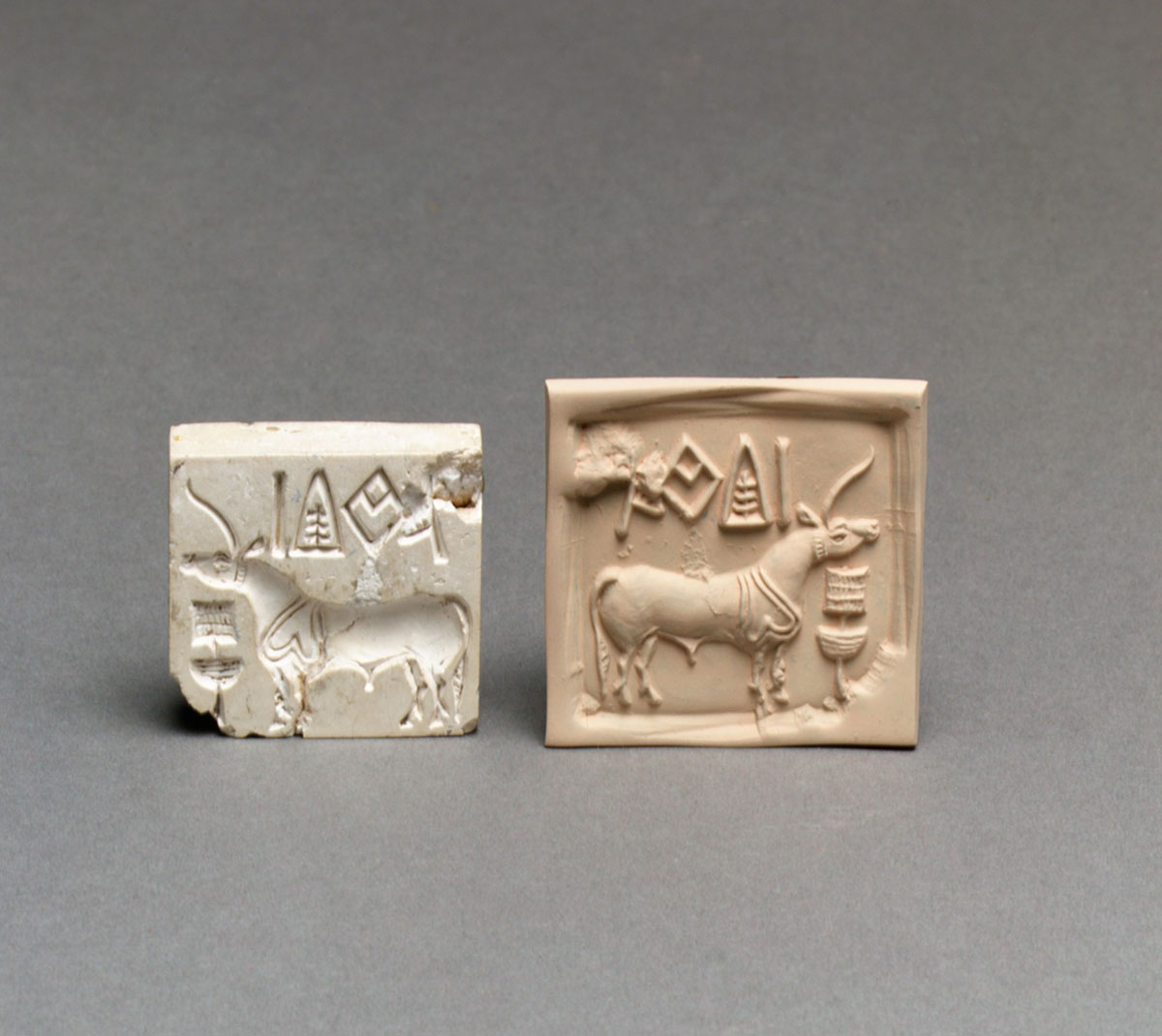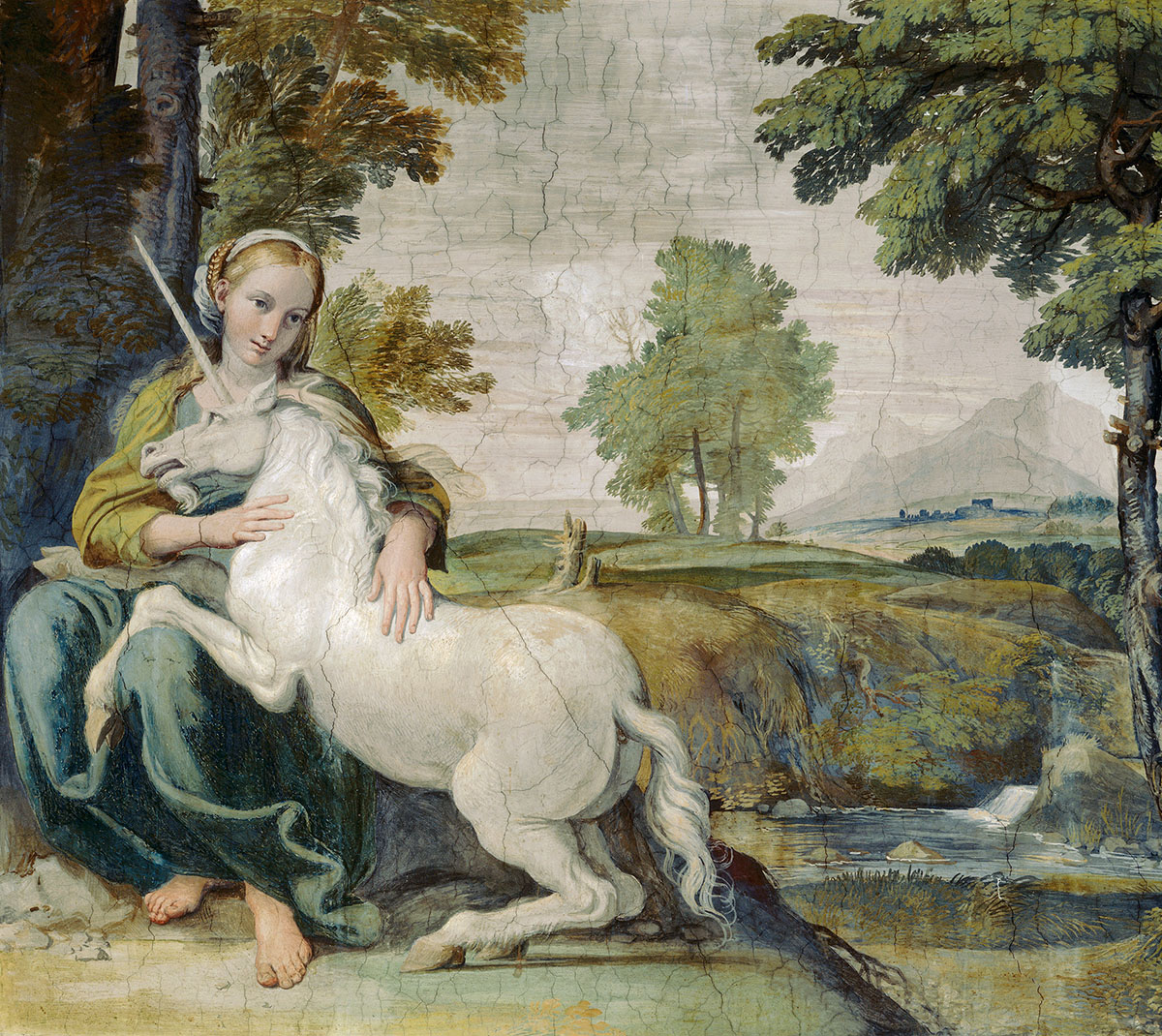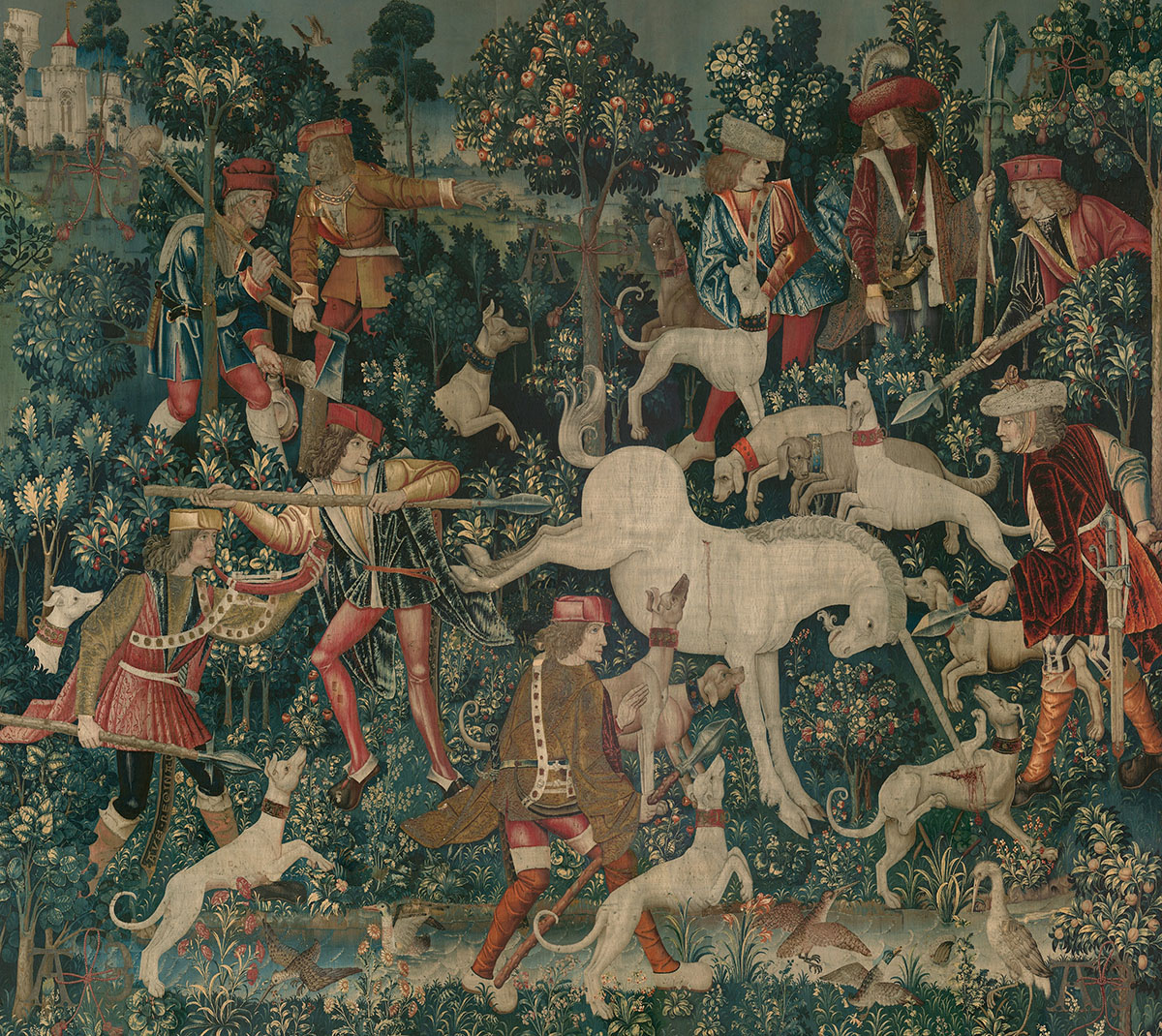PERSPECTIVES
The Unicorn Seals: An Indus Valley Mystery
The image of an animal sometimes resembling a bovine creature and sometimes an antelope, depicted in profile with a single horn, often appears on seals from the Indus Valley. While the objects are often referred to as ‘unicorn seals’, after the mythical unicorn, historians have debated the animal being represented and where the idea for such a depiction comes from. Was this motif depicting an actual animal or a fantastical creature? Indeed, the mystery of the ‘unicorn’ is only exacerbated by the absence of a deciphered script from the Indus Valley Civilisation, scholars cannot do more than present varying theories explaining the creature that appears on these seals.
Some of the most extensive finds from the Indus Valley Civilisation, seals were likely used in internal and external trade. Primarily square or rectangular and made of steatite, or soapstone, one face of the seal is typically carved with an inscription and a depiction of an animal. The other surface has a boss, or a handle, with perforation for a cord to pass through it. To produce a seal, the steatite was cut and carved in intaglio and then fired to make it hard. The seals predominantly bore images of various kinds of animals, including bulls, wild ox, zebu (a type of cattle), elephants, rhinoceros, tigers and a single-horned animal, identified by some historians as a unicorn. Examples of such seals have been found beyond the region, indicating that they may also have been used in trade with the Mesopotamian Civilisation in west Asia. Among the animal seals, the unicorn motif was the most common one. Its earliest representation is dated to circa 2600 BCE and it was seen on seals for nearly 700 years, until circa 1900 BCE.
Some theories have suggested that the animal in the seals is an extinct aurochs — a species of cattle recognised by the lack of a hump — or an antelope. These theories explain the single horn as the animal shown in a strict side profile. However, images and terracotta figurines of two-horned animals suggest that seal cutters and craftsmen of the Indus Valley depicted animals with both horns in profile, leading to the hypothesis that the unicorn seals, therefore, might be representations of a different single-horned creature. Further, the animal depicted is believed to be male, evidenced by the pizzle shown in the images. However, its physical form also borrows from other animal types depicted by the seal carvers of Indus Valley. The animal is often seen with an undefined object in front of it, on a stand, with horizontal lines emerging from it, leading historians to speculate that it may have been a feeding trough, a cage, a tree or a container for soma, an intoxicant drink.
The influence of iconography from other contemporary civilisations, particularly in western Asia, also remains debatable. Some historians have also suggested that the unicorn seal may have been influenced by the iconography of Rsyasringa, a sage in Hindu and Buddhist mythology, who is described as having deer horns and is associated with fertility. Historians suggest that, in the Indus Valley civilisation in which agriculture and animal husbandry were key activities, the unicorn may also have symbolised fertility and an association with rain. The mystery of the pictograph symbols and our lack of knowledge about the language systems of the Indus Valley Civilisation have made it difficult to ascertain what function the unicorn seal may have served.
How the unicorn is now represented in Western cultures is also connected to India. Ancient Greek texts, beginning with Ctesias of Cnidus’ fourth century BCE text Indica, stated that the unicorn was an animal from South Asia, whose horn — of white, crimson and black — was a foot and a half in length and had the power to prevent epilepsy and provide immunity from poisons if used as a drinking vessel. Some scholars debate whether this may have referred to the single-horned rhinoceros found in the Indian subcontinent.
While much of Ctesias’ writings were considered unreliable, the association of the unicorn with these magical properties survived well into the medieval period where it was featured in several bestiaries (treatises describing various kinds of animals). Gradually, the animal and its association with purity and chastity also found relevance in the Biblical context. From the fourth-fifth centuries CE onwards, the unicorn was popularised and associated with the idea of a fearsome beast that could only be controlled by a virgin maiden, a theme also expressed in the aforementioned bestiaries. This idea inspired several European paintings from the medieval period, showing young women holding or seated next to a unicorn.
The numerous stamp seals of the Indus Valley, with their depictions of animals and human-like figures, have been critical sources of insight into the material, religious and cultural life of the civilisation, but the undeciphered Indus script means that scholars do not yet have a method to interpret the contexts associated with these objects. Whether it was a fantastical creature in the Indus Valley or a quirk of artistic depiction or simply a symbol used in trade, the unicorn has since developed its own rich, variegated mythology and finds new meaning in popular culture, ranging from books like the Harry Potter series to TV shows like My Little Pony and She-Ra and the Princesses of Power, even today.
Bibliography
“A Unicorn Seal.” Harappa.com. Accessed October 1, 2022. https://www.harappa.com/seal/seal1.html.
Atre, Shubhangana. “The Harappan Riddle of ‘Unicorn.’” Bulletin of the Deccan College Research Institute 44 (1985): 1–10. http://www.jstor.org/stable/42930107.
Awan, Arshad. “The Enigma of The Indus Unicorn.” Tribune, September 18, 2022. https://tribune.com.pk/story/2377208/the-enigma-of-the-indus-unicorn.
Cavallo, Adolfo Salvatore. The Unicorn Tapestries at the Metropolitan Museum of Art. New York: The Metropolitan Museum of Art, 1998.
Kenoyer, Jonathan Mark. “Iconography of the Indus Unicorn: Origins and Legacy.” In Connections and Complexity: New Approaches to the Archaeology of South Asia, edited by Shinu Anna Abraham, Praveena Gullapalli, Teresa P Raczek and Uzma Z Rizvi. California: Left Coast Press, 2013.
Lavers, Chris. The Natural History of Unicorns. London: Granta Books, 2009.
Parpola, Asko. “The Harappan Unicorn in Eurasian and South Asian Perspectives.” In Linguistics, Archaeology and the Human Past, edited by Toashiki Osada and Hitoshi Endo, 125–188. Kyoto: Indus Project, 2011.









